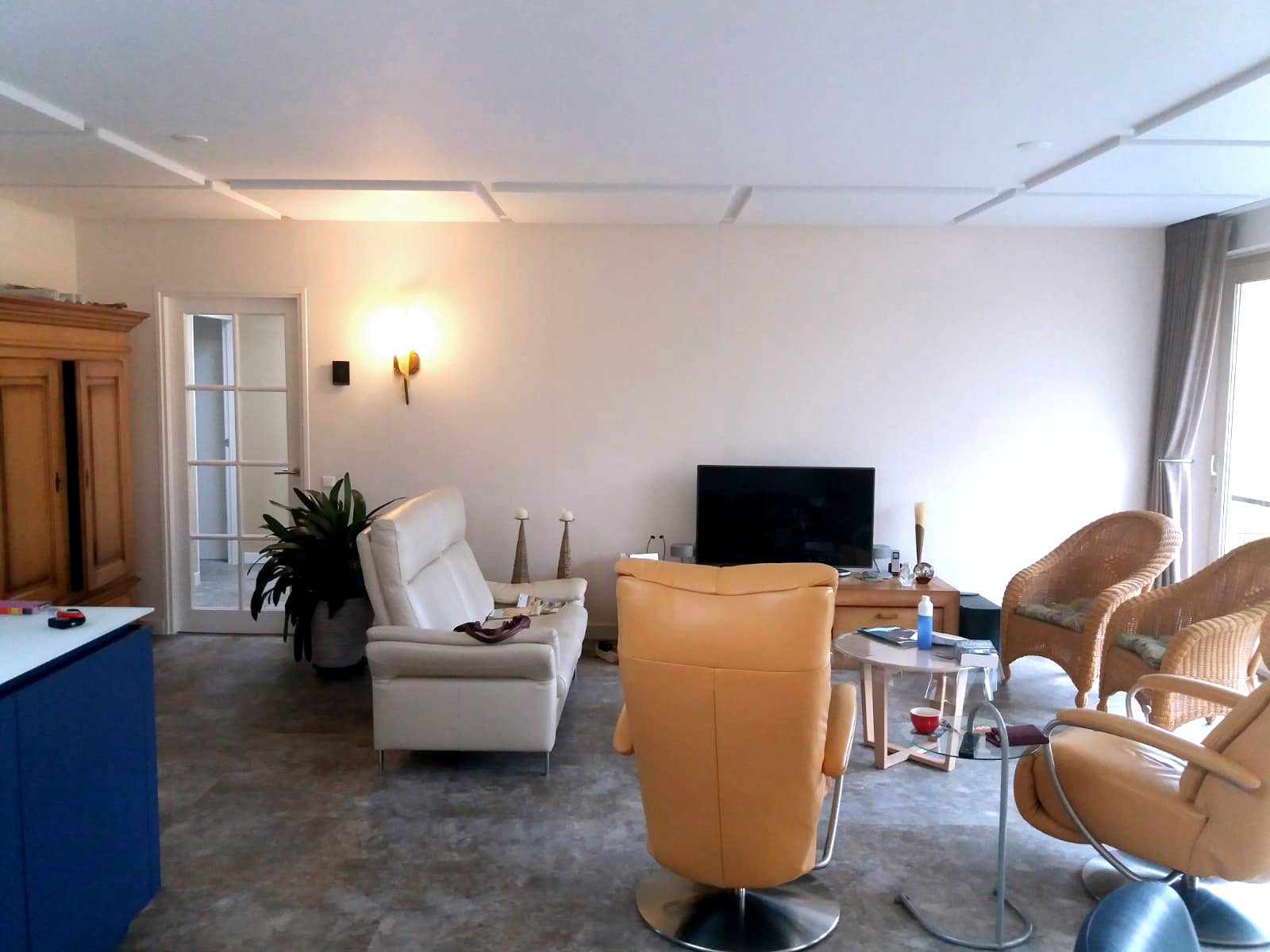Improve living room acoustics, reduce echo and reverberation
If you experience echo and reverberation in the living room, or elsewhere in your house, then you found the solution. With this acoustic guide you can easily improve the acoustics by reducing echo and reverberation in your living room, hallway or home office. Echo and reverberation are caused by to many hard materials and surfaces in the interior, such as smooth walls and ceilings.
Especially spaces with large and high ceilings, such as a living room, suffer from poor acoustics. This results in a unsociable room where intelligibility during conversations is at least unpleasant. But also the quality of listening to music or looking at movies in a reverberating room is downright bad. Let's improve the acoustics in your living room and house!

Most frequently asked questions about living rooms acoustics
Which product is most suitable?
On our acoustic panels page you can find an overview of the available products to improve room acoustics, for example in the living room. All of our acoustic panels have excellent sound absorber properties in the same frequency range as you might expect to hear in a living room. These sounds all fall in the categories of medium and high frequencies, and can effectively be reduced, or absorbed, with most of our acoustic panels in our range.
The best result is obtained with panels that have a thickness of 40 mm. Thicker is better, but we think that a product should also be to your liking of course and fits the style of the interior. However, the more important thing is to use a sufficient amount of acoustic panels. As mentioned before, the smooth and hard ceiling, wall and floors, are the reason why sound keeps reflecting and bouncing throughout the living room and maybe even the whole house.
How many acoustic panels to improve room acoustics
According to the general rule of thumb a room needs at least about 30% up to 50% of the floor area of sound absorbing materials, this also include carpets, furniture and curtains. For example: let's say your living is about 70 m², normal height, than you need about 20 to 35 m² of extra sound absorbing surfaces, acoustic panels. The image above has a prefect ratio of acoustic panels and floor area. The ceiling is covered for about 60% with Flamex Edge panels, a bit more than the rule of thumb suggests. And as always, don't hesitate to aks us for advice.
Where to mount acoustic panels in a living room?
Ideally acoustic panels are mounted on both walls and ceilings, but this is not always possible bacause of the interior. This is why in most cases we advice to start by mounting acoustic panels to the ceiling, a ceiling offers lots of free space. A ceiling solution is for most living rooms a great spot to start improving acoustics and excellent results can be achieved. The image below shows Akotherm SF mounted to the ceiling amongst all the walls, perfect example to improve the acoustics in an average living room. This is because these are the spots where sound reflect from, the corner where walls and ceiling meet. In this image a perfect floor space, acoustic panel ratio in shown!
Popular acoustic panels to improve living room acoustics
We've placed links to our most popular acoustic panels below. All of these are great to improve the acoustics in your home, in the kitchen, living room or maybe a home office. Flamex Edge is shown in the first image on this page and Akotherm SF, in a different size, in the second image. All of these panels are easy to mount to any surface with our Stauf Extreme Tack glue.
- Flamex Basic
Sound absorbing sheets with straight edges. - Flamex Edge
Acoustic foam panels with faceted edge. - Akotherm SF
Acoustic polyester panel with straight edges. - Akotherm Edge
Acoustic polyester panel with faceted edge.
Questions? 
Do you have any questions about room acoustics or would like a product sample? Please feel free to contact us.

 Sound Insulation
Sound Insulation  Soundproofing
Soundproofing  Vibration Isolation
Vibration Isolation  Silent Ventilation
Silent Ventilation  Accessories
Accessories  Thermal & Acoustic Insulation
Thermal & Acoustic Insulation 